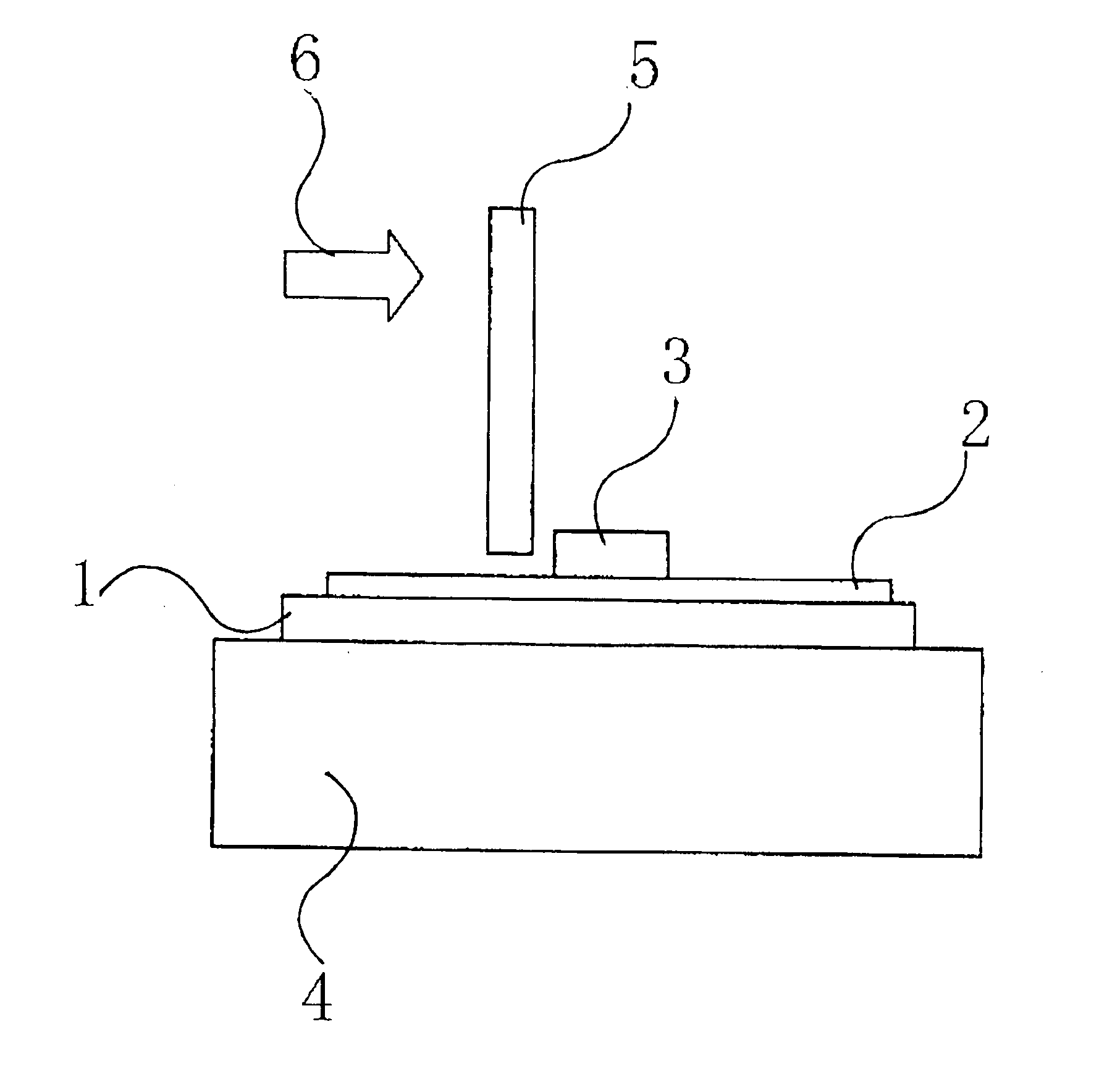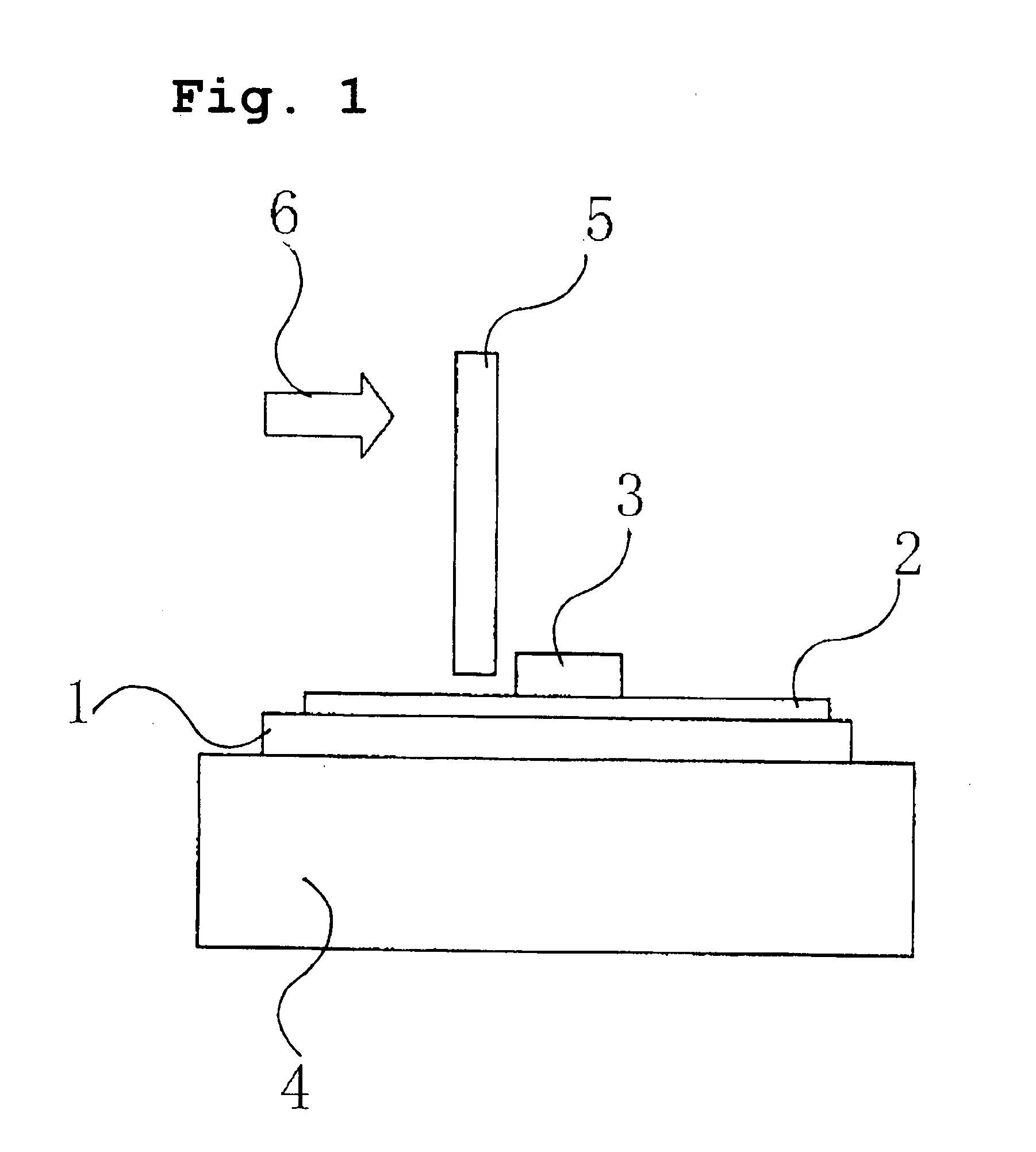Temporary adhesive composition, and method of producing thin wafer
a technology of adhesive composition and composition, which is applied in the direction of film/foil adhesives, non-macromolecular adhesive additives, chemistry apparatuses and processes, etc., can solve the problems of inadequacies, inability to meet the subsequent back surface wiring layer formation process, and expensive equipment, and achieve excellent thermal stability and excellent productivity.
- Summary
- Abstract
- Description
- Claims
- Application Information
AI Technical Summary
Benefits of technology
Problems solved by technology
Method used
Image
Examples
preparation example 1
Synthesis of Alkenyl Group-Containing Organopolysiloxane (A1)
[0082]A 1 L flask fitted with a stirrer, a cooling device and a thermometer was charged with 234 g (13 mols) of water and 35 g of toluene, and the flask was then heated to 80° C. in an oil bath. A dropping funnel was charged with 127 g (0.6 mols) of phenyltrichlorosilane, 56 g (0.2 mols) of diphenyldichlorosilane, 14.1 g (0.1 mols) of methylvinyldichlorosilane and 9 g (0.1 mols) of trimethylchlorosilane, and the resulting mixture in the dropping funnel was then added dropwise to the flask with constant stirring over a period of one hour. Following completion of the dropwise addition, the reaction mixture was stirred for a further one hour at 80° C. Subsequently, the reaction mixture was left to settle while cooling to room temperature, the separated water phase was removed, and then a water washing operation, in which a 10% aqueous solution of sodium sulfate was mixed with the toluene phase for 10 minutes, the resulting mi...
preparation example 2
Synthesis of Alkenyl Group-Containing Organopolysiloxane (A1)
[0085]An apparatus was setup in a similar manner to Preparation Example 1, the 1 L flask was charged with 234 g (13 mols) of water and 35 g of toluene, and the flask was then heated to 80° C. in an oil bath. With the exception of charging the dropping funnel with 148 g (0.8 mols) of phenyltrichlorosilane, 11.3 g (0.08 mols) of methylvinyldichlorosilane and 26.5 g (0.12 mols) of dimethylvinylchlorosilane, preparation was conducted in the same manner as Preparation Example 1, yielding 120 g of a solid organopolysiloxane (resin a1-2).
[0086]The thus obtained organopolysiloxane comprised 80 mol % of T units, 8 mol % of D units and 12 mol % of M units, the terminals included 0.02 mols of silanol groups per 100 g of the organopolysiloxane, the external appearance was of a colorless transparent solid, and the weight-average molecular weight was 6,200. Further, the softening point of the resin was 74° C.
preparation example 3
Synthesis of Organopolysiloxane (A)
[0087]100 g of the solid organopolysiloxane (resin a1-1) obtained in Preparation Example 1 was used as the component (A1), and was dissolved in 100 g of propylene glycol monomethyl ether acetate to prepare a solution with a solid fraction concentration of 50%. Sufficient platinum catalyst was added to the solution to provide 100 ppm of platinum atoms relative to the mass of resin, and with the resulting mixture heated to 60° C., 3.75 g of 1,1,2,2-tetramethyldisiloxane was added dropwise to the reaction mixture as the component (A2), and the amount of heat generated as a result of reaction was observed. The amount of the component (A2) relative to the component (A1) was equivalent to an H / Vi ratio of 0.75. The reaction was continued for 2 hours at 80° C., and was then halted. Subsequently, the reaction mixture was concentrated by removal of some of the solvent by distillation under reduced pressure, yielding a resin solution P with a solid fraction ...
PUM
| Property | Measurement | Unit |
|---|---|---|
| Temperature | aaaaa | aaaaa |
| Substance count | aaaaa | aaaaa |
| Substance count | aaaaa | aaaaa |
Abstract
Description
Claims
Application Information
 Login to View More
Login to View More - R&D
- Intellectual Property
- Life Sciences
- Materials
- Tech Scout
- Unparalleled Data Quality
- Higher Quality Content
- 60% Fewer Hallucinations
Browse by: Latest US Patents, China's latest patents, Technical Efficacy Thesaurus, Application Domain, Technology Topic, Popular Technical Reports.
© 2025 PatSnap. All rights reserved.Legal|Privacy policy|Modern Slavery Act Transparency Statement|Sitemap|About US| Contact US: help@patsnap.com



